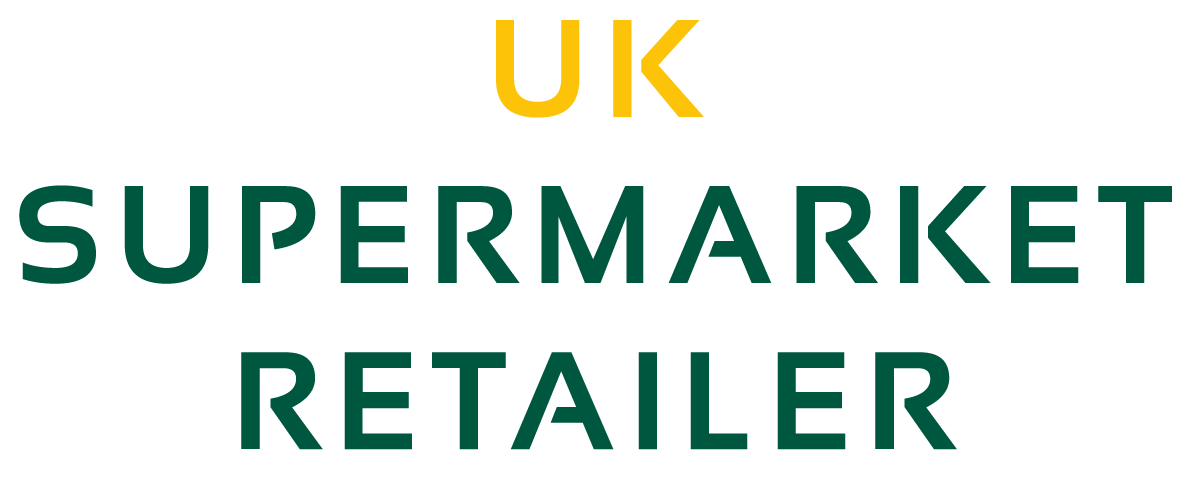INTERNET OF THINGS (IOT)
Integrate cutting-edge IoT technology with existing assets & systems to make your buildings work smarter.
Gain extra visibility into asset performance
By harnessing real-time data and automation from IoT sensors and devices we are able to integrate this data with existing control and automation to drive improved building performance. We empower businesses to monitor space utilisation, monitor indoor air quality, track asset performance, but to name a few that lead to reduced operational costs, and ensure a safe and sustainable environment. Our comprehensive IoT solutions provide actionable insights and seamless control, empowering you to make informed decisions for a more productive and eco-friendly workspace. Experience the next level of building management with our forward-thinking IoT service.
SOME OF OUR IOT POSSIBILITIES
Ensure optimal working environment for your team with real time air condition reporting and response service.
IoT sensors quickly identify deviations from safe parameters, triggering alerts when conditions favor Legionella growth. This proactive approach enables timely interventions before issues escalate.
IoT grants extra visibility on lighting based on actual usage needs, allowing you to optimise usage, reduce energy consumption and associated costs.
IoT sensors immediately identify leaks as they occur, allowing for swift intervention before minor issues escalate into major problems. This proactive approach minimises repair costs and prevents potential damage.
WHAT DO OUR CLIENTS SAY?
GOT A QUESTION ABOUT INTERNET OF THINGS?
FREQUENTLY ASKED QUESTIONS
-
What is IoT?
IoT, which stands for the Internet of Things, refers to a network of interconnected physical objects or "things" that are embedded with sensors, software, and other technologies to collect and exchange data over the internet.
Key characteristics of the Internet of Things include:
Connected Devices: Everyday objects and devices, such as appliances, vehicles, machinery, and even clothing, can be equipped with sensors and connectivity to enable data exchange.
Data Sharing: IoT devices collect and transmit data to centralised systems or other devices, enabling real-time monitoring, analysis, and control.
Automation and Control: IoT allows for remote monitoring and control of devices and processes, often leading to increased efficiency, convenience, and productivity.
Interoperability: IoT devices and systems can communicate and work together, even if they come from different manufacturers or use different technologies.
Data Analysis: The massive amount of data generated by IoT devices can be analysed to gain insights, identify patterns, and inform decision-making.
Smart Environments: IoT can create smart environments where devices interact to provide enhanced services, such as smart homes, smart cities, and industrial automation.
Enhanced Experiences: IoT applications can improve user experiences, enable predictive maintenance, and offer personalised services based on data analysis.
Challenges: IoT presents challenges related to data privacy, security, and the potential for information overload due to the vast amounts of data generated.
IoT has applications across various sectors, including agriculture, healthcare, transportation, manufacturing, energy, and more. It has the potential to transform industries and improve processes through increased connectivity, data-driven insights, and automation.
-
What are the advantages of IoT
Efficiency and Automation: IoT enables automation of processes, reducing manual intervention and improving operational efficiency. This is particularly valuable in industries like manufacturing, where IoT can streamline production and logistics.
Real-Time Monitoring: IoT devices provide real-time data and insights, allowing for proactive monitoring and quick response to changing conditions. This is essential in sectors such as healthcare, where patient monitoring can be enhanced.
Data-Driven Insights: IoT generates vast amounts of data that can be analysed to uncover patterns, trends, and correlations. This data-driven approach informs better decision-making and strategic planning.
Predictive Maintenance: IoT facilitates predictive maintenance by monitoring equipment performance and identifying signs of potential failures, helping to reduce downtime and maintenance costs.
Resource Efficiency: In sectors like agriculture, IoT enables precision farming by monitoring soil conditions, weather patterns, and crop health, leading to optimised resource usage and higher yields.
Cost Savings: Through improved efficiency, reduced downtime, and optimised resource usage, IoT contributes to significant cost savings over time.
Enhanced Customer Experience: IoT enables personalised and context-aware services, enhancing customer experiences in retail, hospitality, and other sectors.
Safety and Security: IoT devices can enhance safety through real-time monitoring of hazardous environments and equipment. In urban areas, IoT can contribute to smart city initiatives, improving public safety.
Environmental Impact: IoT supports sustainability by optimising energy consumption, reducing waste, and enabling smart energy management in buildings and industries.
Healthcare Advancements: IoT applications in healthcare include remote patient monitoring, wearable devices, and telemedicine, leading to improved patient outcomes and access to healthcare services.
Smart Homes: IoT transforms homes into smart environments, enabling control of appliances, lighting, security systems, and more through connected devices.
Innovation and New Business Models: IoT fosters innovation by creating opportunities for new products, services, and business models that cater to evolving customer needs.
Supply Chain Management: IoT enhances supply chain visibility by tracking goods and assets in real-time, reducing inventory costs and improving logistics.
Data-Driven Agriculture: In farming, IoT provides insights into soil conditions, crop health, and livestock, allowing for better resource management and sustainable practices.
Accessibility and Inclusivity: IoT can improve accessibility for people with disabilities by enabling smart devices and technologies that cater to individual needs.
While IoT offers numerous advantages, it's important to address challenges such as data security, privacy concerns, and interoperability issues to fully harness its potential benefits.
-
How can IoT help businesses?
Operational Efficiency: IoT enables businesses to automate processes, monitor operations in real time, and streamline workflows. This leads to improved efficiency, reduced manual intervention, and enhanced productivity.
Remote Monitoring and Management: Businesses can remotely monitor equipment, machinery, and facilities using IoT sensors, ensuring optimal performance, preventive maintenance, and timely issue resolution.
Data-Driven Insights: IoT generates a wealth of data that can be analysed to gain insights into customer preferences, operational patterns, and market trends. These insights inform strategic decisions and business planning.
Customer Experience: IoT allows businesses to offer personalised, context-aware products and services, enhancing customer experiences and engagement.
Supply Chain Visibility: IoT enables real-time tracking of goods and assets in the supply chain, improving logistics, reducing delays, and enhancing overall supply chain management.
Predictive Maintenance: By monitoring equipment health, IoT helps businesses predict and prevent breakdowns, reducing downtime, maintenance costs, and disruptions.
Energy Efficiency: IoT optimises energy consumption in buildings, factories, and facilities by providing real-time insights into usage patterns and enabling smart energy management.
Inventory Management: IoT assists in tracking inventory levels, automating reordering processes, and reducing excess stock, leading to cost savings and improved inventory management.
Security and Safety: IoT enhances workplace safety by monitoring hazardous environments, equipment conditions, and employee well-being. It also supports security measures through surveillance and access control systems.
New Revenue Streams: Businesses can create new revenue streams by offering IoT-enabled products and services, such as subscription-based models, data analytics services, and more.
Innovation: IoT fosters innovation by encouraging the development of new products, services, and business models that cater to changing market demands.
Competitive Advantage: Embracing IoT technologies can give businesses a competitive edge by improving operations, customer satisfaction, and agility in a rapidly evolving market.
Smart Marketing: IoT data can be leveraged for targeted marketing campaigns and personalised promotions, increasing customer engagement and sales.
Data Security: IoT can enhance data security by enabling secure device authentication, encryption, and monitoring of potential security breaches.
Regulatory Compliance: In industries with strict regulations, IoT can help businesses monitor and report compliance data more efficiently.
IoT's potential benefits are vast, but successful implementation requires careful planning, robust cybersecurity measures, and a focus on addressing privacy concerns. By leveraging IoT effectively, businesses can unlock new opportunities, improve operations, and drive growth in the modern business landscape.
-
How is air quality measured in IoT?
Air quality measurement in IoT involves the use of sensors and devices that detect various pollutants and environmental factors to assess the quality of the air. These sensors collect data on parameters such as particulate matter (PM2.5 and PM10), gases (e.g., carbon dioxide, carbon monoxide, nitrogen dioxide, ozone), temperature, humidity, and more. The collected data is then transmitted to a central system for analysis, often in real time.
Here's how air quality measurement works in IoT:
Sensor Deployment: IoT-enabled air quality sensors are strategically placed in different locations, such as urban areas, industrial sites, indoor spaces, and transportation hubs. The number and placement of sensors depend on the specific monitoring objectives and the area being assessed.
Data Collection: Sensors continuously monitor the air and collect data on various parameters. For example, PM2.5 and PM10 sensors measure the concentration of fine particulate matter, while gas sensors detect levels of specific pollutants like carbon dioxide or nitrogen dioxide.
Data Transmission: The collected air quality data is transmitted wirelessly to a centralised system or cloud-based platform. IoT communication protocols, such as Wi-Fi, cellular networks, or Low-Power Wide-Area Networks (LPWAN), are used for data transmission.
Data Analysis: In the central system or cloud platform, the collected data is analysed using data analytics techniques. Patterns, trends, and anomalies are identified to assess air quality conditions and potential pollution sources.
Real-Time Monitoring: IoT enables real-time monitoring, allowing stakeholders to access up-to-date information about air quality. This is especially valuable for timely responses to deteriorating conditions or pollution events.
Alerts and Notifications: When air quality levels exceed predefined thresholds or regulatory limits, the system can generate alerts or notifications to relevant authorities, stakeholders, or the public.
Data Visualisation: The analysed air quality data is often presented through user-friendly dashboards, maps, or visualisations. This makes it easier for stakeholders to interpret the data and make informed decisions.
Long-Term Analysis: IoT air quality monitoring systems accumulate historical data over time, enabling long-term analysis of air quality trends and the effectiveness of pollution control measures.
Integration: Air quality IoT systems can be integrated with other environmental monitoring systems, weather stations, and urban planning databases for a comprehensive understanding of air quality factors.
Public Awareness: Air quality data collected through IoT can be shared with the public through websites, mobile apps, and other communication channels, raising awareness and encouraging individuals to take appropriate actions.
IoT-enabled air quality monitoring contributes to better understanding air pollution patterns, supporting regulatory compliance, and guiding informed policy decisions for improved public health and environmental quality.
-
How is AI used in IoT?
Artificial Intelligence (AI) is extensively used in conjunction with IoT (Internet of Things) to enhance the capabilities and effectiveness of connected devices and systems. AI enables IoT devices to process, analyse, and interpret the vast amount of data they generate, leading to more intelligent and autonomous decision-making.
Here's how AI is used in IoT:
Data Analytics and Insights: AI algorithms process and analyse the data collected by IoT sensors to identify patterns, trends, and anomalies.
Insights gained from AI-driven data analysis help businesses and organisations make informed decisions and respond to changing conditions.
Predictive Analytics: AI-powered predictive models use historical data to forecast future events or conditions.
In IoT, this can be applied to predict equipment failures, maintenance needs, energy consumption patterns, and more.
Real-time Monitoring and Alerts: AI algorithms monitor IoT-generated data in real time to detect deviations from normal conditions.
Alerts and notifications are generated when predefined thresholds are crossed, enabling timely responses.
Autonomous Decision-making: AI enables IoT devices to make autonomous decisions based on data analysis and predefined rules.
For example, an industrial machine might adjust its operating parameters based on real-time sensor readings.
Natural Language Processing (NLP): IoT devices can use AI-driven NLP to understand and respond to voice commands or written instructions.
Smart assistants like Amazon Alexa or Google Assistant in IoT devices use NLP to interact with users.
Image and Video Analysis: AI-powered image and video analysis allows IoT devices to recognise objects, people, and events captured by cameras.
Surveillance cameras in smart cities, for instance, can identify traffic congestion or security breaches.
Health Monitoring and Diagnostics: In healthcare IoT, AI processes data from wearable devices to monitor health conditions and provide real-time diagnostics.
AI can detect abnormal trends and alert medical professionals to potential health issues.
Optimisation and Efficiency: AI algorithms optimise IoT processes and operations by adjusting parameters to achieve better efficiency, resource utilisation, and cost savings.
In energy management, AI optimises heating, cooling, and lighting systems in buildings.
Contextual Awareness: AI enables IoT devices to understand contextual information, making them more responsive to user needs and preferences.
Smart thermostats, for example, can adjust temperature based on occupancy patterns.
Machine Learning at the Edge:AI and machine learning models are deployed directly on IoT devices (edge devices) to process data locally without relying on cloud servers.
This reduces latency and enables faster decision-making.
The synergy between AI and IoT empowers devices to go beyond simple data collection, enabling them to intelligently interpret and respond to their environment. This leads to more efficient operations, improved user experiences, and innovative applications across industries.
-
What is the difference between proprietary IoT and systems based on standard protocols?
The difference between proprietary IoT and systems based on standard protocols lies in the approach taken to design and implement IoT solutions, particularly in terms of communication protocols, interoperability, and vendor lock-in.
Here's a breakdown of the two approaches:
Proprietary IoT:
Custom Communication Protocols: Proprietary IoT solutions often use custom or proprietary communication protocols that are specific to a particular manufacturer or vendor.
Vendor Lock-In: Since proprietary protocols are unique to a vendor, users of proprietary IoT solutions are often tied to that vendor's ecosystem, hardware, and software. This can limit flexibility and choice.
Limited Interoperability: Proprietary systems may not easily communicate or integrate with devices or systems from other vendors, leading to challenges in building comprehensive IoT ecosystems.
Control and Customisation: Proprietary solutions may provide more control and customization options for specific use cases, but this can come at the expense of interoperability with other devices.
Innovation Pace: Vendors of proprietary solutions have control over the pace of innovation and updates, which may align with their business interests but could lag behind industry standards.
Security and Updates: Security and updates are handled by the vendor, which can be advantageous in terms of uniformity but might raise concerns about security vulnerabilities or dependence on vendor practices.
Systems Based on Standard Protocols:
Open and Standardised Communication: Systems based on standard protocols use well-established, open, and widely adopted communication protocols like MQTT, CoAP, HTTP, and others.
Interoperability: Standard protocols promote interoperability among different devices, platforms, and vendors. Devices from various manufacturers can communicate seamlessly, creating a more flexible and scalable ecosystem.
Vendor Neutrality: Users have the freedom to choose devices and solutions from different vendors, avoiding vendor lock-in and enabling greater flexibility in building and expanding IoT deployments.
Ecosystem Expansion: Standard protocols facilitate the integration of new devices, services, and technologies into existing IoT environments, allowing for incremental growth and innovation.
Community Contributions: Standard protocols benefit from contributions and improvements from a larger community, which helps drive innovation, address security issues, and ensure continuous development.
Security and Updates: Security is addressed through community efforts and best practices, often resulting in more robust and well-tested security measures. Updates and improvements can be applied more universally.
Regulatory Compliance: Standard protocols often align with regulatory and industry standards, simplifying compliance efforts and ensuring adherence to established guidelines.
In summary, proprietary IoT solutions offer more tailored control but may come with limitations in interoperability and flexibility. Systems based on standard protocols promote interoperability, vendor neutrality, and scalability, facilitating the creation of comprehensive and adaptable IoT ecosystems. The choice between the two approaches depends on factors such as the specific use case, long-term goals, and the balance between customisation and interoperability
-
What is Lorawan?
LoRaWAN (Long Range Wide Area Network) is a low-power, wide-area network (LPWAN) protocol designed for efficient communication between IoT devices and gateways over long distances.
LoRaWAN is specifically optimised for battery-operated devices that require long-range wireless connectivity and extended battery life. It is commonly used for applications such as smart cities, agriculture, industrial monitoring, and asset tracking.
Key characteristics and features of LoRaWAN include:
Long Range: LoRaWAN devices can communicate over several kilometres in rural areas and up to a few kilometres in urban environments, making it suitable for applications that require long-range coverage.
Low Power Consumption: LoRaWAN devices are designed to operate on minimal power, allowing battery-operated devices to have extended battery life, often lasting for years.
Low Data Rates: LoRaWAN supports low data rates, which are sufficient for transmitting small packets of data at regular intervals. This makes it suitable for applications with intermittent data needs.
Multiple Channels and Spreading Factors: LoRaWAN uses multiple channels and spreading factors to accommodate varying data rates and interference conditions, optimising performance in different environments.
Public and Private Networks: LoRaWAN networks can be deployed as public networks by network operators or as private networks by businesses or organisations, offering flexibility in deployment options.
Security: LoRaWAN incorporates various security features, including device authentication, data encryption, and message integrity validation, ensuring secure communication between devices and gateways.
Bi-Directional Communication: LoRaWAN supports bi-directional communication, allowing devices to both send data and receive commands or configuration updates from the network.
Scalability: LoRaWAN networks are designed to support a large number of devices, making them suitable for applications that require extensive device deployments.
Adaptive Data Rate (ADR): LoRaWAN supports adaptive data rate, which dynamically adjusts the data rate and transmit power of devices based on the quality of the communication link, optimising performance and battery life.
Class A, B, and C Devices: LoRaWAN devices are categorised into different classes based on their communication capabilities. Class A devices have the lowest power consumption but limited communication windows, while Class B and C devices offer more flexible communication schedules.
LoRaWAN is often used in combination with low-cost, energy-efficient sensors to create IoT networks that cover large geographical areas while minimising power consumption. It provides an efficient solution for applications that require long-range connectivity, such as smart agriculture, environmental monitoring, smart metering, and asset tracking.
Experience the next level of building management
IoT enables your building to work smarter. These smart and versatile sensors can detect occupancy and adjust lighting, temperature, and ventilation, accordingly, leading to improved energy efficiency and occupant comfort and can be added to any existing building.














